NOMINATED PROJECTS TO ACTIVE HOUSE LABEL CONTEST 2016
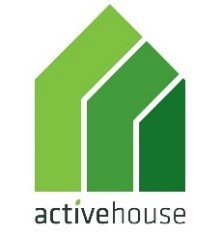 The Active House label is a worldwide quality stamp for comfortable and sustainable buildings. It advices on elements that are important to human’s life and living in their home.
The Active House label is a worldwide quality stamp for comfortable and sustainable buildings. It advices on elements that are important to human’s life and living in their home.
Buildings with an Active House label have been designed and evaluated with a combined focus on comfort, smart use of energy and minimum impact on the environment.
The Active House Label Contest: In order introduce the new label, Active House has launched a contest to architects, designers, constructors and students who have developed, or have in mind, a project for an Active House.
A dedicated jury has nominated 5 projects, among the 21 received, and they will continue in the competition to win a free Active House label.
Nominated Projects:
1. Solhuset – Denmark´s climate friendly nursery
The climate friendly kindergarten “Solhuset” in Hørsholm, stresses once again that good architecture and integrated energy design can make a difference when it comes to energy minimization and a good indoor climate. Solhuset is designed with focus on the Active House vision, which means that the indoor climate conditions has been optimized with optimal daylight conditions and where the building design utilize passive solutions like natural ventilation and passive solar energy. The design of Solhuset was developed through an intense and innovative process, where the team through a series of workshops has qualified its joint development of the project partners in the energy and climate change concept.
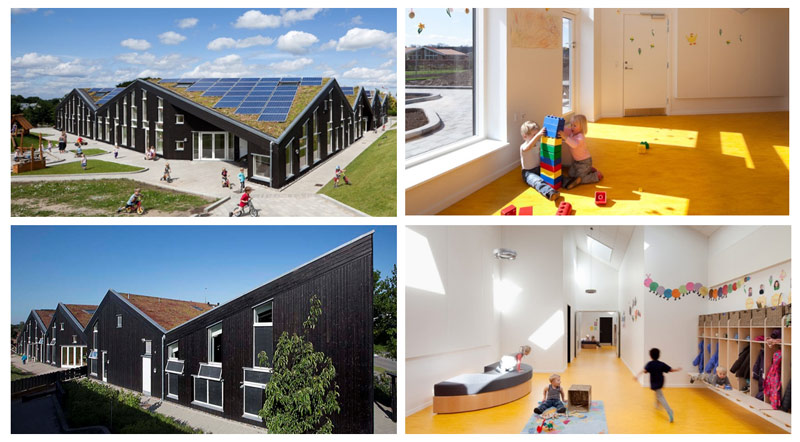
2. Green Solution House- the green and healthy conference centre
Green Solution House inspire the visitors by offering a comfortable stay in a healthy and creative environment. The building and landscape show a holistic approach to sustainable design, emphasizing regenerative solutions including healthy indoor climate, renewable energy sources, active materials and recyclability. The design of the building itself is based on several parameters to show a holistic approach to sustainability. The building is based on the criteria of the Active House vision.
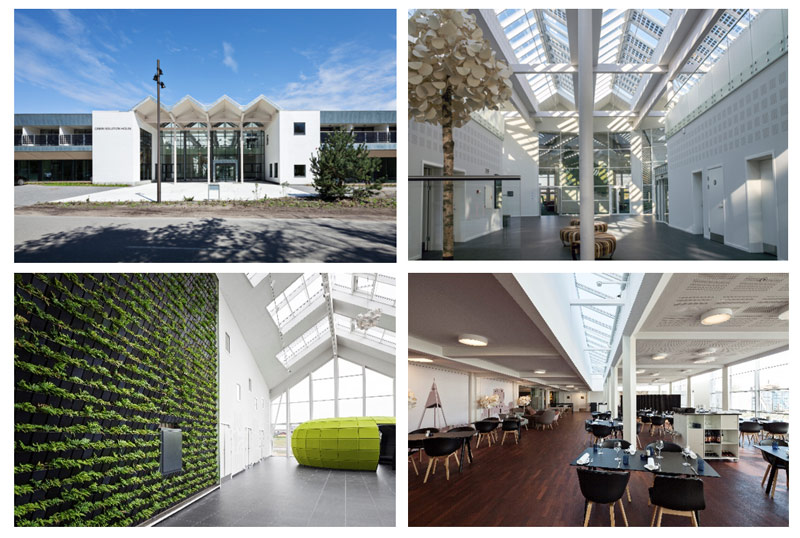
3. ISOBO Aktiv – A House for the Future
ISOBO Aktiv evaluate several technical solutions in one design and identify steps to design optimal indoor air quality. The building is based on passive measures and a compact building with extra insulation. The focus on the risk of overheating resulted a ventilative cooling design with several more skylights than normal, something that has other positive effects such as better daylight conditions with better spread of the daylight in the compact building.
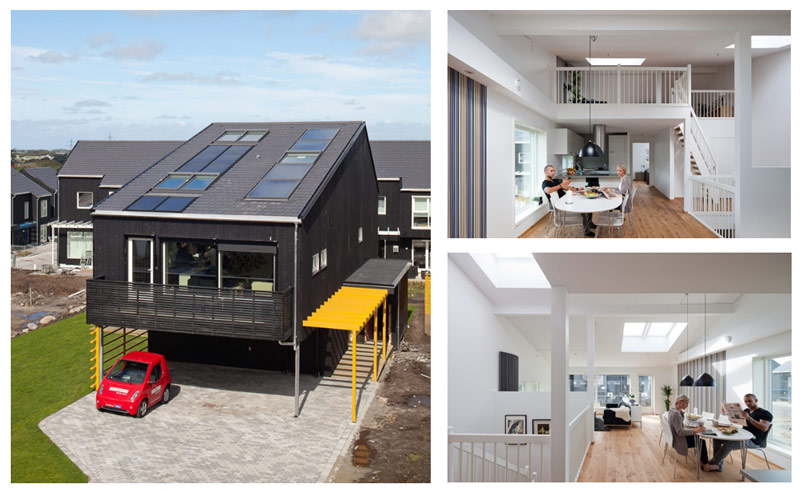
4. LichtAktiv Haus
LichtAktiv Haus is the first CO2-neutral modernisation of a so-called Siedlerhaus, a semi-detached house from the 1950s located in the Wilhelmsburg district of Hamburg. The innovative modernization strategy combines maximum livability with optimum energy efficiency. The once tight and closed structure of the building has been transformed into spacious rooms with high levels of daylight, providing occupants with the best living comfort. LichtAktiv Haus aims to achieve carbon neutrality and renewable energies meet all its energy demands.
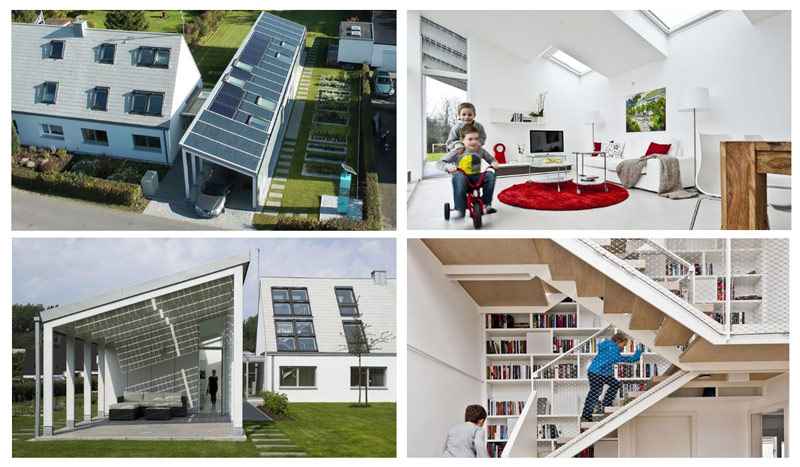
5. House on Garda Lake
House on Garda Lake is a private residence on two levels situated in northern Italy close to the Lake Garda. Looking for a deep interaction with lake and natural surroundings the energy efficiency of this near zero energy building was only one of the ingredients of planning. The new single family house based on passive house standards is oriented with its big window facade to the lake and therefore to north. This has the advantage to reduce the higher cooling demand in that specific climate zone.
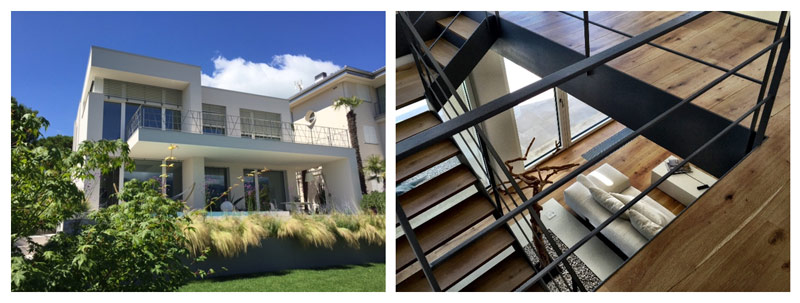
Special focus on student concept house – RhOME
RhOME is the perfect examples of integration between architecture and sustainability. It is a prototype and winner of Solar Decathlon competition 2014. The goal with RhOME is to design a perfect small living space that could be an innovative solution for energy problem in dwellings. The design takes in count not only the energetic production, but also the whole design process: from the choice of materials to the management of the waste. RhOME, in particular designed following the Active House specification and using the Active House radar as a tool for giving the right directions for improvement, in order to achieve the best result possible. The building is an efficient building that optimize the whole comfort and minimize use of energy.
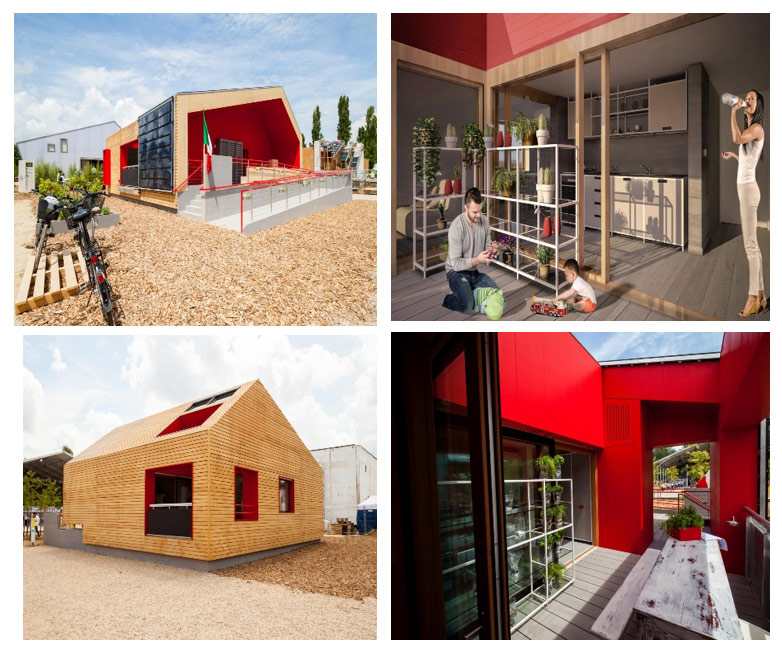
Active House Jury Members
Rory Bergin
 Arch MSc, Partner, Sustainable Futures, HTA Architects, England
Arch MSc, Partner, Sustainable Futures, HTA Architects, EnglandRory Bergin joined HTA as an architect in 1993 and became an associate in 1999, and a partner in 2013 In 2007 he formed HTA’s Sustainable Futures unit.
Rory and his team are responsible for the sustainability consultancy on some of the UK’s highest profile housing projects.
Marco Imperadori
 Professor, Politecnico di Milano, Italy
Professor, Politecnico di Milano, ItalyMarco Imperadori is associate professor of Politecnico di Milano – Lecco Campus, owners of the chair of Technological Design and Innovation and Rector’s deputy for Far-East. He his Pro-Rector’s Deputy (Politecnico di Milano – Lecco Campus) for internationalization programs, member sustainability commission of Fondazione Promozione Acciaio, director of Politecnico di Milano research group in European research Samrt-Eco Buildings.
Mónika Tornóczky
 MSc. Architect, product manager of Alukönigstahl Hungary
MSc. Architect, product manager of Alukönigstahl HungaryMónika Tornóczky is former General Secretary HuGBC and former VELUX architect. She has been working on a number different activities toward architects and for sustainable architecture. Mónika Tornóczky is graduated as an architect at Technical University of Budapest.
Duzan Doepel
 Partner, architect, DoepelStrijkers, Holland
Partner, architect, DoepelStrijkers, HollandDuzan Doepel, together with interior architect Eline Strijkers established DoepelStrijkers in 2007. His work focus on how good design has a positive social and ecological impact. Over the last ten years he has developed concepts and realised projects from installations to large scale interiors, architecture and urban interventions in which these principles are integrated.
For more information about the Active House lable contest: https://www.activehouse.info/active-house-cases/?award=1#cases


